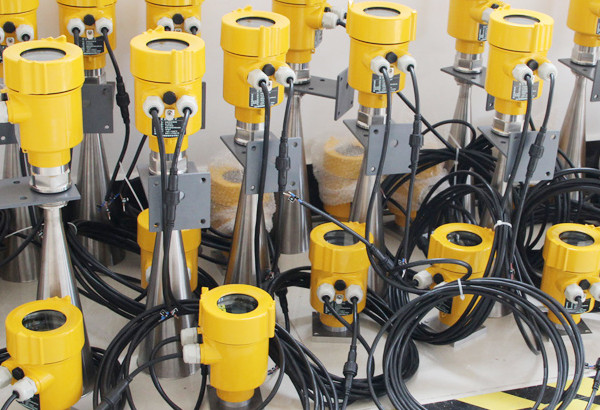In the field of industrial automation, radar level gauge, as a high-precision, non-contact liquid level measurement instrument, is widely used in liquid level monitoring of various liquid containers. The installation angle of the radar level gauge not only affects its measurement accuracy, but is also directly related to its service life and safety. Today, let us discuss the importance and role of the installation angle of the radar level gauge.

First, we need to understand how the radar level gauge works. Radar level gauges measure the distance between the liquid and the antenna by emitting high-frequency microwave pulses and receiving their reflected signals to determine the liquid level. In this process, the choice of installation angle is crucial.
A suitable installation angle can ensure that the radar waves enter the liquid at a vertical or near-vertical angle. When the radar wave enters the liquid at a vertical angle, its reflected signal is the strongest and most stable, thereby improving measurement accuracy.
On the contrary, if the installation angle is too small or too large, the reflected signal generated by the radar wave on the liquid surface will become weak and unstable, resulting in increased measurement errors.

In addition to affecting the measurement accuracy, the installation angle is also related to the service life of the radar level gauge. When the radar level gauge is installed on the side or bottom of the container, the antenna may be impacted and corroded by the liquid due to the impact of liquid flow and fluctuations.
Over time, this can lead to antenna damage or performance degradation, thereby affecting the service life of the radar level gauge.
The appropriate installation angle can keep the antenna away from direct impact and corrosion of liquid, thereby extending the service life of the radar level gauge.
In addition, the installation angle is also related to the safety of the radar level gauge. In some special circumstances, such as when the liquid boils, fluctuates violently, or contains corrosive substances, an incorrect installation angle may cause damage to the radar level gauge or cause a safety accident.
Therefore, when selecting the installation angle, the nature of the liquid and the structural characteristics of the container must be fully considered to ensure that the radar level gauge can work safely and reliably.

So, how to choose the appropriate installation angle? First, the installation position of the radar level gauge needs to be determined according to the shape and height of the container.
Generally speaking, the radar level gauge should be installed in the middle or upper part of the container to obtain the best measurement effect.
At the same time, avoid installing the radar level gauge on the bottom or side of the container to avoid direct impact and corrosion from the liquid.
Secondly, during the installation process, it should be ensured that the radar wave enters the liquid at a vertical or nearly vertical angle.
This can be achieved by adjusting the mounting angle of the radar level gauge or using a specialized mounting bracket.
Finally, after installation is complete, the radar level gauge should be calibrated and tested to ensure its measurement accuracy and safety.

The installation angle of the radar level gauge is of great significance to its measurement accuracy, service life and safety. When selecting the installation angle, the nature of the liquid and the structural characteristics of the container must be fully considered to ensure that the radar level gauge can work reliably and maximize its measurement advantages.
